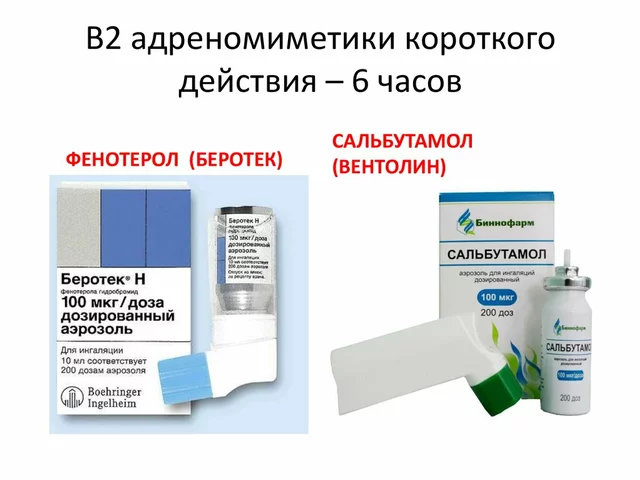
One affordable pill can cut the risk of death in certain heart failure patients by roughly a third. That pill is spironolactone. It’s powerful-and tricky. Get it right and you reduce hospital stays, swelling, and breathlessness. Get it wrong and potassium climbs, kidneys sulk, and you’re back in ED. This piece breaks down how to use it safely and when to press pause. I’m writing from Perth, where hot summers and salty diets make fluid balance a daily juggling act-some days I’m timing lab reminders between packing Maximilian’s lunch and stopping our cockatoo, Sundance, from stealing grapes.
TL;DR, Key Takeaways, and Who This Is For
- Why it matters: In HFrEF (reduced ejection fraction), spironolactone lowers mortality and hospitalisations (RALES, NEJM 1999). In selected HFpEF, it can reduce hospital stays (TOPCAT, NEJM 2014), but benefits vary.
- Who likely benefits: Adults with chronic HFrEF (NYHA II-IV) on standard therapy (ACEi/ARB/ARNI, beta-blocker, SGLT2 inhibitor ± loop diuretic), with eGFR ≥30 mL/min/1.73 m² and potassium ≤5.0 mmol/L.
- Biggest risk: Hyperkalaemia. Avoid if K+ is high or kidneys are struggling; monitor potassium and creatinine closely at start and after dose changes.
- Typical dose: Start 12.5-25 mg once daily; consider 12.5 mg if elderly, low body weight, or CKD. Titrate to 25-50 mg if tolerated and still symptomatic.
- Monitoring rule of thumb: Check labs at baseline, 3-7 days after starting or adjusting, at 1 month, monthly for 3 months, then every 3-6 months.
This guide is for people with congestive heart failure (and their families) who want: (1) a clear view of the real benefits, (2) straightforward dosing and lab plans, (3) risk control strategies, (4) what to do when potassium creeps up, and (5) credible alternatives if side effects bite.
How Spironolactone Helps in CHF, and When to Use It
The short story: Aldosterone is a hormone that tells the body to hold salt and water-and fuels scarring in the heart and vessels. Spironolactone blocks aldosterone’s receptor (it’s a mineralocorticoid receptor antagonist, or MRA). Less fluid, less fibrosis, better outcomes.
The evidence in plain English:
- HFrEF (reduced EF): The RALES trial (1999) added low-dose spironolactone to standard therapy in advanced HFrEF and showed a ~30% relative reduction in mortality and fewer hospitalisations.
- Post-MI with LV dysfunction: Eplerenone (a cousin of spironolactone) cut death in EPHESUS (2003) and helped in mild HFrEF in EMPHASIS-HF (2011). Why mention eplerenone? It’s the key alternative when spironolactone’s side effects are a problem.
- HFpEF (preserved EF): TOPCAT (2014) was mixed-regional differences were striking. Signals of fewer hospitalisations, especially in patients with high natriuretic peptides. Guidelines back selective use to reduce hospitalisations, not to reduce death.
Current guideline position (2025 context):
- AHA/ACC/HFSA (2022 guideline; 2024 focused updates): Class I recommendation for MRAs in HFrEF (if K+ ≤5.0 and eGFR ≥30). For HFpEF, a Class IIb recommendation in selected patients to cut hospitalisations.
- ESC 2023 HF guideline: Similar stance-MRAs are core in HFrEF; cautious, selected use in HFpEF.
- Australia: The National Heart Foundation endorses MRAs in HFrEF as part of foundational therapy with ACEi/ARB/ARNI, beta-blocker, and SGLT2 inhibitor. PBS subsidises spironolactone for relevant indications, which keeps costs low out-of-pocket.
Who should not start (or should pause):
- Baseline K+ >5.0 mmol/L.
- eGFR <30 mL/min/1.73 m², or rising creatinine without a clear explanation (roughly >221 µmol/L or >2.5 mg/dL).
- Current severe dehydration, vomiting/diarrhoea, or acute kidney injury.
- Concomitant meds that already raise potassium without a plan to monitor (e.g., ACEi/ARB/ARNI plus potassium supplements or high-dose trimethoprim-sulfamethoxazole).
Common benefits you’ll actually feel:
- Less breathlessness and ankle swelling over weeks.
- Fewer urgent clinic/ED visits for fluid overload.
- Better exercise tolerance as the heart remodels.
Side effects you need to know:
- Electrolytes/kidneys: High potassium, rising creatinine.
- Hormonal: Breast tenderness or enlargement (men and women), menstrual changes, reduced libido. Eplerenone has less hormonal effect but is pricier.
- Digestive: Nausea, diarrhoea.
- Blood pressure: Dizziness, especially if dehydrated or on multiple diuretics.

How to Start and Monitor It: Step-by-Step, Rules of Thumb, and Pitfalls
1) Pre-start checklist (what to do before the first pill)
- Confirm HF type and EF with your clinician. Spironolactone helps most in HFrEF.
- Baseline labs: Potassium, creatinine/eGFR, sodium, bicarbonate. If possible, review recent BNP/NT-proBNP.
- Medication review: ACEi/ARB/ARNI, beta-blocker, SGLT2 inhibitor, loop diuretic, potassium supplements, NSAIDs, antibiotics (trimethoprim), heparins, cyclosporine, tacrolimus, digoxin.
- Diet check: Use of potassium-based salt substitutes, high-potassium juices (tomato, orange), dried fruits, coconut water. You don’t have to ban them-just control portions and timing with your team.
- Plan your lab dates up front. Put them in your phone calendar before you start.
2) Starting dose (keep it simple)
- Standard: 25 mg once daily.
- Go slow if older, low body weight, or eGFR 30-45: 12.5 mg once daily (half a 25 mg tablet) or 25 mg every other day.
- Aim: 25-50 mg daily if tolerated and still symptomatic; many do well at 25 mg.
3) Monitoring schedule (set alarms-seriously)
- Baseline labs before first dose.
- 3-7 days after starting or changing the dose.
- At 1 month.
- Monthly for 3 months.
- Then every 3-6 months long term (and any time you’re unwell or start an interacting drug).
4) What to do with the numbers (quick decision guide)
- K+ ≤5.0 and creatinine stable: Stay the course; consider dose uptitration if still symptomatic.
- K+ 5.1-5.5: Recheck in a few days. Tighten diet, stop potassium supplements, review meds (consider a bit more loop diuretic). Hold dose increases.
- K+ >5.5: Hold spironolactone. Consider potassium binders (sodium zirconium cyclosilicate or patiromer), address diet and interacting drugs, then reattempt at a lower dose when safe.
- Creatinine rise >30% from baseline or eGFR drops below 30: Hold and reassess volume status, other meds, and hydration-restart only if/when numbers recover and the cause is fixed.
5) Sick day rules (save this)
- If you have vomiting, diarrhoea, fevers with poor intake, or dehydration: Temporarily pause spironolactone, ACEi/ARB/ARNI, and metformin. Keep fluids going unless you’ve been told to restrict. Call your clinician for advice and repeat labs within a few days.
- Aussie summer tip (from Perth life): Heatwaves dehydrate you fast. If you’re on a loop diuretic and feel light-headed, check your weight and call your clinic before extra doses.
6) Medication interactions to watch
- Trimethoprim (alone or in co-trimoxazole): Big potassium spike risk. Ask for an alternative antibiotic where possible.
- NSAIDs (ibuprofen, naproxen): Can worsen kidney function and blunt diuretics. Avoid routine use.
- Heparins (including low molecular weight): Can raise potassium.
- Potassium supplements/salt substitutes: Usually stop when starting an MRA.
- ACEi/ARB/ARNI: Safe in combo if you monitor. This combo is where the survival gains happen, but labs matter.
- SGLT2 inhibitors: Helpful; they may reduce hyperkalaemia risk a bit and support kidney function.
- Digoxin: Spironolactone can affect digoxin levels; your clinician may adjust the dose or monitor levels.
7) Diet pointers that actually help
- Don’t panic about potassium-focus on patterns. Swap high-potassium sides (large banana, coconut water) for lower-potassium options (berries, apples, grapes-Sundance-approved).
- Rinse canned beans and veggies; it lowers potassium and sodium.
- Beware “lite salt” blends-they often use potassium chloride.
- Stick to your fluid and sodium targets; spironolactone works better when you’re not loading salt back in.
Real-World Scenarios, Trade-offs, and Alternatives
Scenario 1: Classic HFrEF on core meds
You’re 65, EF 30%, on sacubitril/valsartan, carvedilol, empagliflozin, and furosemide. Baseline K+ 4.5, eGFR 62. Start spironolactone 25 mg daily. At day 5, K+ 4.9; at week 4, K+ 5.1. What now?
- Hold at 25 mg (don’t increase).
- Tune diet (remove potassium salt substitute, halve portion of tomato juice).
- Consider a slight uptick of loop diuretic if there’s oedema.
- Recheck in 3-5 days. If K+ remains 5.1-5.3, discuss a potassium binder to keep you on life-prolonging therapy.
Scenario 2: Borderline kidneys
You’re 78 with EF 25%, eGFR 35, K+ 4.8. Start 12.5 mg daily. Day 5 labs: K+ 5.2, eGFR 33.
- Hold dose increases. Reinforce diet guidance and review meds for hidden potassium risks.
- Repeat labs in 3-5 days. If K+ normalises, continue 12.5 mg. If it creeps up, consider every-other-day dosing or a binder.
- This is where a pharmacist review shines; small changes (e.g., stopping an OTC NSAID) can fix the issue.
Scenario 3: Hormonal side effects in a man
You feel breast tenderness at week 6. What are your options?
- Switch to eplerenone (similar heart benefits in HFrEF, less hormonal impact). Typical dosing: 25 mg daily, titrate to 50 mg daily as tolerated.
- Cost may be higher; in Australia, discuss PBS eligibility and co-pay with your pharmacist.
Scenario 4: HFpEF with swelling and high BNP
EF 55%, recurrent oedema, BNP high. Spironolactone may reduce hospitalisations. You start 25 mg daily, with the same lab safety plan. Expectations: symptom relief and fewer hospital visits-but no proven mortality reduction.
Scenario 5: The heatwave wobble (hello, Perth)
It’s 40°C, you’re mowing too long, you feel woozy. You’re on a loop diuretic and spironolactone.
- Hydrate per your plan; skip any “extra” loop dose until you’ve checked your weight and talked to your clinic.
- If vomiting/diarrhoea starts, use sick day rules and organise labs.
Trade-offs worth knowing
- Spironolactone vs eplerenone: Spironolactone is cheaper and widely used; eplerenone causes fewer hormonal side effects but often costs more. Both need the same potassium and kidney monitoring.
- Dose vs safety: Pushing from 25 mg to 50 mg helps some patients, but hyperkalaemia risk rises. If you’re stable at 25 mg with good symptoms and no admissions, it’s fine to stay there.
- Staying on therapy vs stopping: If potassium rises, don’t abandon MRAs too fast-fix the cause (diet, drug interactions), consider a binder, or switch to eplerenone.
Potassium binders as enablers
Two modern binders-sodium zirconium cyclosilicate and patiromer-can control potassium and allow you to keep heart-protective medicines. In Australia, both are TGA-registered and PBS-listed for eligible patients. They’re not first-line, but they’re a smart tool when the alternative is losing the survival benefit of MRAs.
What the timelines look like
- Fluid symptoms: Often improve over 1-4 weeks.
- Remodelling and survival benefits: Months to years; stick with it.
- Side effects: Hormonal effects may appear after weeks; potassium issues usually show early (first 2-8 weeks) or after an intercurrent illness.

Checklists, Mini‑FAQ, and Next Steps
Quick pre‑start checklist
- HF type confirmed; EF documented.
- Baseline labs in hand (K+, creatinine/eGFR).
- No potassium supplements or salt substitutes on board.
- Plan for lab checks at 3-7 days, 1 month, then regularly.
- Medication interaction review complete.
First month checklist
- Take at the same time daily (morning is fine; it’s not a strong pee-maker like loop diuretics).
- Weigh yourself at the same time each day; flag sudden changes (±1 kg in 24 hours).
- Have lab reminders in your phone calendar.
- Note any breast tenderness, dizziness, muscle weakness, or palpitations-report promptly.
Long‑term checklist
- Labs every 3-6 months (sooner if meds change or you get sick).
- Revisit dose if symptoms or admissions creep back.
- Keep a simple “heart failure wallet card” with your meds, doses, and sick day rules.
FAQ
- Is spironolactone a water pill? Yes, but it’s a gentle one. The bigger win is blocking aldosterone’s long-term harm.
- Can I take it at night? Sure, but morning helps you spot side effects sooner and aligns with lab timings.
- What about cramps or muscle weakness? Could be low sodium or high potassium. Call and get labs.
- Can I use it for acne if I have heart failure? Different dosing and priorities. Acne use is common in dermatology, but in heart failure, safety labs drive the plan. Don’t mix indications without supervision.
- Will it affect sexual function? It can. If that becomes an issue, discuss switching to eplerenone.
- Is it safe in pregnancy? No-avoid during pregnancy and discuss alternatives if planning to conceive.
- Is it okay with diabetes? Yes, and SGLT2 inhibitors pair well. Watch potassium closely, especially with CKD.
- What if my potassium is always borderline? Small diet tweaks, tighter loop diuretic control, or a potassium binder can keep you on therapy.
Pro tips I’ve seen help (simple, real-world)
- Put your lab schedule in the same calendar you use for school pickups or work meetings-you won’t miss it. This is how I avoid forgetting things between lunchboxes and a cheeky cockatoo.
- Carry a short med list. If an urgent care doctor sees “spironolactone” and “ACE inhibitor,” they’ll think twice before giving trimethoprim.
- When in doubt, recheck a lab. It’s cheaper than an admission.
Credible sources behind this guide
Key trials and guidelines informing the advice here: RALES (NEJM 1999), EPHESUS (NEJM 2003), EMPHASIS-HF (NEJM 2011), TOPCAT (NEJM 2014), AHA/ACC/HFSA Heart Failure Guidelines (2022; with 2024 updates), ESC Heart Failure Guidelines (2023), and the National Heart Foundation of Australia heart failure guidance. Your clinician may tailor advice to your exact comorbidities and local protocols.
Next steps if you’re starting now
- Book baseline labs and a 10-15 minute follow-up (in person or telehealth) for day 5-7 after your first dose.
- Pick a starting dose (25 mg, or 12.5 mg if frail/CKD) with your clinician.
- Clear your meds of potassium boosters (supplements, lite salt, trimethoprim) and NSAIDs.
- Set calendar reminders for labs at 1 month and monthly for three months.
- Discuss a contingency plan: What to do if K+ hits 5.5, if you get gastro, or if a GP wants to start an antibiotic.
Troubleshooting quick guide
- Potassium ≥5.5 mmol/L: Hold spironolactone, check ECG if symptomatic, review meds/diet, consider binder, recheck within 24-72 hours.
- Creatinine spike >30%: Hold; assess volume (are you too dry?), review diuretics/NSAIDs, repeat labs soon.
- Dizziness: Check BP sitting/standing; if low, review other blood pressure meds first before dropping spironolactone.
- Breast tenderness: Switch to eplerenone if benefits are needed and side effect persists.
- Recurrent admissions despite therapy: Reassess the whole plan-ensure beta-blocker and ARNI are at target or best-tolerated doses, SGLT2 inhibitor is on board, iron deficiency is treated, and devices (CRT/ICD) are considered when indicated.
Used with care, spironolactone is a cornerstone of modern heart failure therapy. The trick is pairing its proven benefits with a simple, reliable monitoring plan. Do that, and you’ll likely breathe easier, sleep flatter, and keep the hospital at bay.




Kshitij Nim
September 6, 2025 AT 11:09Spironolactone saved my dad’s life after his MI. We were scared of the potassium spikes, but once we nailed the lab schedule-day 5, week 1, month 1-it became routine. He’s been on 25mg for 3 years now, no hospital visits, walks his grandkids to school daily. The trick? No salt substitutes, no NSAIDs, and he carries his med list in his wallet like the post said. Simple, but life-changing.
Also, the Perth heat tip? Spot on. We’re in Arizona and same deal-when it hits 110, we pause meds and check weight before doing anything else.
Scott Horvath
September 6, 2025 AT 13:02Armando Rodriguez
September 7, 2025 AT 01:13Thank you for this comprehensive, clinically grounded guide. As a cardiologist practicing in rural Missouri, I see patients who are often overwhelmed by medication complexity. Your step-by-step monitoring schedule and sick-day rules are exactly what primary care providers need-clear, actionable, and rooted in evidence. The emphasis on potassium binders as enablers rather than last-resort options is particularly valuable. I’ve already shared this with our clinic’s nurse team for patient handouts.
One addition: For elderly patients with borderline renal function, consider pairing spironolactone with a once-weekly renal function check for the first 6 weeks. Many of our patients miss monthly visits but can manage weekly phone calls. Small adaptations like this improve adherence without compromising safety.
jennifer sizemore
September 7, 2025 AT 04:37I love how you included the cockatoo and lunchboxes-it made this feel human. My mom’s on this med and she’s been paranoid about every grape she eats, so I printed out your diet tips and taped them to the fridge next to her ‘NO SALT’ sign. She even started rinsing her canned beans now, which is a miracle. Also, the potassium binder info was a game-changer-we were ready to quit spironolactone until we learned about zirconium cyclosilicate. Now she’s stable at 25mg and watching Netflix without gasping for air.
Also, to the guy with the boobs: you’re not alone. My uncle switched to eplerenone and the tenderness vanished in two weeks. Worth the extra $20 a month if it means sleeping through the night.
matt tricarico
September 7, 2025 AT 13:16While your guide is superficially well-structured, it lacks critical nuance regarding the heterogeneity of HFpEF responses in TOPCAT. You gloss over the fact that the benefit was almost entirely driven by the U.S. cohort, with negligible effect in Brazil and Russia-a regional bias rarely acknowledged in primary care literature. Additionally, your recommendation to use spironolactone in patients with eGFR 30–45 is dangerously lax; the 2024 ESC update explicitly recommends against MRA initiation below eGFR 45 without nephrology consultation. Your casual tone undermines the gravity of hyperkalemia risk, which can be fatal within 72 hours if unmonitored. This is not a lifestyle tweak-it’s high-stakes pharmacology. If you’re not checking K+ at 48 hours, you’re gambling with lives.
And please, stop romanticizing cockatoos. They are not therapeutic companions; they are feathered anarchists who will steal your insulin vial if left unattended.